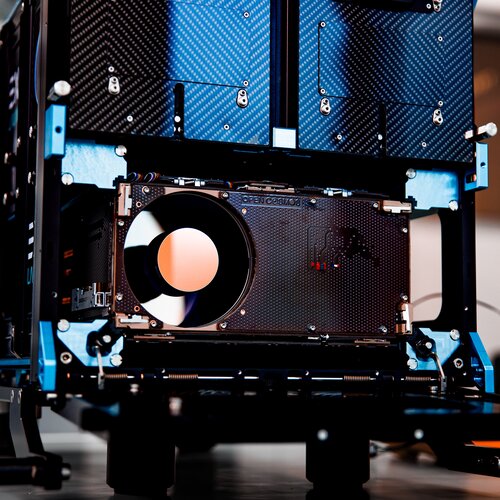

Access the video
Φsat-2, which shares its ride into orbit with ESA’s Arctic Weather Satellite, is scheduled to liftoff in July 2024 on a SpaceX Falcon 9 from the Vandenberg Air Force Base, California, in the US.
Φsat-2 carries a multispectral instrument that images Earth in seven different bands and, through its AI applications, is capable of many things that can provide actionable information on the ground, including:
Cloud detection
Unlike traditional satellites that downlink all captured images, including those obscured by clouds, Φsat-2 processes these images directly in orbit, ensuring that only clear, usable images are sent back to Earth.
Developed by KP Labs, this application can also classify clouds and provide insights into cloud distribution. This gives users more flexibility when it is time to decide whether an image is usable or not.
Street map generation
The Sat2Map application, developed by CGI, converts satellite imagery into street maps. This capability is particularly beneficial for emergency response teams, enabling them to identify accessible roads during disasters such as floods or earthquakes.
When the satellite orbits over the affected area and acquires images, the images are passed to the onboard processer that will identify streets and generate a corresponding map.
Initially, this application will be demonstrated over Southeast Asia, showcasing its potential to aid in crisis management.
Maritime vessel detection
The maritime vessel detection application, developed by CEiiA, utilises machine learning techniques to automatically detect and classify vessels in specified regions, facilitating the monitoring of activities like illegal fishing. This application underscores the satellite’s role in supporting maritime security and environmental conservation efforts.



